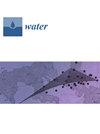A Comprehensive Evaluation of Water Resource Carrying Capacity Based on the Optimized Projection Pursuit Regression Model: A Case Study from China
IF 3
3区 环境科学与生态学
Q2 ENVIRONMENTAL SCIENCES
引用次数: 0
Abstract
The Han River Ecological Economic Belt (HREEB) has a substantial amount of water resources; however, its distribution is uneven, and issues such as seasonal and engineering water shortages are prevalent. This necessitates a thorough assessment of the current water resource situation and trends in water resource carrying capacity (WRCC) to provide scientific support for the rational allocation of water resources. This study employed the RAGA-PP model to establish a WRCC evaluation index system composed of four subsystems: water resources, economy, society, and the ecological environment. The WRCC of the 17 major cities in the HREEB was evaluated from 2008 to 2022. The differentiation method was introduced to compare the reliability of the RAGA-PP model with three evaluation methods: the entropy weight TOPSIS method, the rank sum ratio method, and the principal component analysis method. In addition, an obstacle degree model was introduced to analyze the factors influencing WRCC enhancement. The results indicated the following. (1) In the differentiation test of the four models, the RAGA-PP model was found to have the highest differentiation value, and the results showed that it was more reliable in the WRCC evaluation of HREEB. (2) WRCC in the HREEB underwent significant changes between 2008 and 2022. (3) The WRCC in Shiyan and Wuhan, which are located in the eastern part of the HREEB, were high in Hubei, low in four cities in Henan, and satisfactory in three cities in Shaanxi. (4) The carrying capacity of the subsystems of the cities in the HREEB exhibited fluctuating changes with obvious internal variations. (5) The problems in the WRCC guideline layer were consistent across all cities in the HREEB, with limited per capita water resources being the primary issue in the indicator layer. Assessing WRCC is essential for achieving sustainable water resource use and high-quality regional development.基于优化预测回归模型的水资源承载能力综合评价:中国案例研究
汉江生态经济带(HREEB)拥有大量水资源,但分布不均,普遍存在季节性缺水和工程性缺水等问题。因此,有必要对水资源现状及水资源承载力(WRCC)变化趋势进行全面评估,为合理配置水资源提供科学依据。本研究采用 RAGA-PP 模型,建立了由水资源、经济、社会和生态环境四个子系统组成的水资源承载能力评价指标体系。从 2008 年到 2022 年,对 HREEB 中 17 个主要城市的水资源循环能力进行了评估。引入差异化方法,比较了 RAGA-PP 模型与三种评价方法的可靠性:熵权 TOPSIS 法、秩和比值法和主成分分析法。此外,还引入了障碍度模型来分析影响 WRCC 增强的因素。结果表明(1) 在四个模型的差异化检验中,RAGA-PP 模型的差异化值最高,结果表明该模型在人行天桥的 WRCC 评价中更为可靠。(2) 2008 年至 2022 年期间,HREEB 的 WRCC 发生了显著变化。(3) 位于大鄂东的十堰和武汉的 WRCC 在湖北偏高,在河南的四个城市偏低,在陕西的三个城市令人满意。(4) 生态经济区各城市子系统的承载能力呈现波动变化,内部差异明显。(5) 河南省各市水资源承载能力准则层存在的问题是一致的,人均水资源有限是指标层的首要问题。要实现水资源的可持续利用和区域的高质量发展,就必须对水资源循环成本进行评估。
本文章由计算机程序翻译,如有差异,请以英文原文为准。
求助全文
约1分钟内获得全文
求助全文
来源期刊

Water
WATER RESOURCES-
CiteScore
5.80
自引率
14.70%
发文量
3491
审稿时长
19.85 days
期刊介绍:
Water (ISSN 2073-4441) is an international and cross-disciplinary scholarly journal covering all aspects of water including water science and technology, and the hydrology, ecology and management of water resources. It publishes regular research papers, critical reviews and short communications, and there is no restriction on the length of the papers. Our aim is to encourage scientists to publish their experimental and theoretical research in as much detail as possible. Full experimental and/or methodical details must be provided for research articles. Computed data or files regarding the full details of the experimental procedure, if unable to be published in a normal way, can be deposited as supplementary material.
 求助内容:
求助内容: 应助结果提醒方式:
应助结果提醒方式:


